Ten Baking Tips from a Professional Baker
When I found out about the KAF field trip, I was very excited to be learning from a pro. I would definitely call myself comfortable with yeast but I still learned a TON in the class. I think that even the most novice bakers in the group walked away feeling more confident and knowledgeable about baking.
1. When measuring dry ingredients, make small piles around the perimeter of the bowl. Susan explained that this is useful in case something interupts you or you lose track of where you are… You can simply look down in your bowl and see what you’ve already measured out. I did this for the crackers as you can see below.
2. When topping a pizza, go light on the toppings, starting with the sauce. If you overload your pizza, it will be soggy on the bottom and won’t rise up while baking. Susan said you should simply “annoint” the pizza dough with sauce and then sprinkle on your toppings.
3. Don’t put raw veggies on a pizza. Since raw veggies release water as they cook, they will make your pizza soggy. Instead, if you are going to use vegetables, be sure to pre-cook them prior to topping your pizza.
4. When rolling dough of any kind, always start from the center and roll out. Most bakers know this, but it’s always good to be reminded of the proper technique.
6. To knead dough, simply Fold, Roll, Turn. These three little words just stuck in my head and convinced me that I was being way too tough with my dough when I kneaded it. You should be gentle but firm with the dough.
7. Keep the heat inside your oven. Check out this awesome KAF oven. Wouldn’t it be nice to have one of those? Susan explained a variety of reasons why their oven can be so precise. For one, the doors are very small compared to the inside of the oven so very little air gets in when you open the oven door. At home, you have a very large opening for the door. Another thing she talked about was the thermostat in the oven. At KAF, their thermostat kicks in if the oven goes 2 degrees off. At home, an electric oven’s thermostat will kick in when it is 10 degrees off and for a gas oven, it’s more like 30 degrees.
8. The smell that most people associate with whole wheat flour is actually the smell of rancid whole wheat flour. Susan had us smell a bucket of rancid whole wheat flour, then a bucket with fresh whole wheat flour. She said most people don’t like whole grain baked goods because they are using rancid flour. Your whole wheat flour shouldn’t have a strong smell to it if it’s fresh. To keep it fresh in your house, store it in the freezer, away from the door.
9. Measure flour correctly. Again, most bakers know that you don’t want to pack flour into the measuring cup. Susan recommended lightly sprinkling the flour into your measuring cup using a spoon/scoop. Once it has filled to the top, use a straight edge to level it off. A cup of flour should be around 4 ounces.














 I am Jen the Beantown Baker. Engineer by day and baking maven by night. Hubby serves as my #1 fan and official taste tester. We got hitched back in 2006. Barefoot. In the sand. With the waves crashing behind us. It was one of the best decisions we’ve ever made.
I am Jen the Beantown Baker. Engineer by day and baking maven by night. Hubby serves as my #1 fan and official taste tester. We got hitched back in 2006. Barefoot. In the sand. With the waves crashing behind us. It was one of the best decisions we’ve ever made. 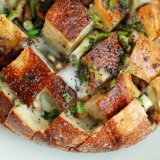

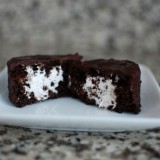
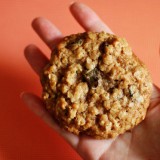
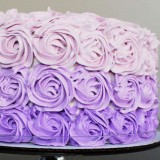
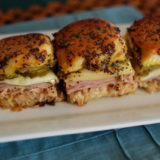


What a great and yummy idea! I wish I lived closer and could have joined. I need to research the bakeries in Phoenix and find some delicious cupcakes.
What an amazing idea and post, awesome.
what a great post and a fun idea!
You did SUCH a great job with this. I’m so happy it went well for you! And no rain? Double bonus!!!
How neat, all the cupcakes look yummy to me!
Very cool! Your group must have been exhausted at the end of the day. I am from Boston but now live in PA, your post made me want to head home for a visit. 🙂
Thanks everyone. We definitely lucked out with the weather. It was a bit hot, but not unbearable.
It was an exhausting day. I think we left the last bakery around 8:30. Hubby and I grabbed some dinner and got home around 11:00. We were exhausted!
I am jealous! This is right up my alley. I need to get myself out to Babycakes ASAP!
I used to live in Quincy and a stop into Babycakes was mandatory at least once a week for DH and me.
i live in the north end and have been wondering about the new lyndell’s!! great info for a fellow bostoner!!
What a great crawl! Glad to see you had fun and I hope to make a stop to check these out when I’ll be visiting in a few months! I’ve been on a slight commenting hiatus with my busy schedule lately… but it’s great to catch up and see what’s cooking in your kitchen!
Such a fantastic idea – I love Boston… and cupcakes.
What a great idea! I am in Boston and I am amazed at all of the cupcake shops that keep popping up. And another one: I just read that Todd English is opening “Curly Cupcakes” on Charles street!
kitchenbelle.com
fabulous idea for 24,24,24! i’m hungry for cupcakes now….
Great post! I can’t wait to try some of these places out the next time I’m in Boston.
Love this idea! Great post and pictures. The straw in the Pink Lemonade cupcake at Sweet is so cute!!
Thank you SO much for this! Although, I wish I had all of this info on Friday when we were wandering around town just for fun! I am SO going to have to try some of these places!
I love the fact that you did this crawl – I wanted to do the same thing after reading a Boston.com article a few months ago but never got off my lazy butt to do it. You’ve inspired me to start visiting some of these places.
From a wedding standpoint, I love all the pictures of the cupcakes – this is because I want them as a part of my wedding reception and need to find the right bakery to get them from.
As always, great post!
You forgot to try the the only cupcake store that would have scored a 5.0. Sensational cupcakes in saugus just 10 mins from boston. You really should try them they are simply sensational. http://Www.sensationalcupcake.com
Thanks for the note about Curly Cupcakes, I’ll have to check that out too.
As mentioned in the post, we were only trying cupcake bakeries that were accessable via the T. We wanted to be able to rate bakeries that anyone could get to in the city. There are quite a few other bakeries that don’t meet that criteria. I’ll definitely have to try Sensational Cupcakes next time I’m in the Saugus area though.
you should have gone to Lyndell’s – the *real* Lyndell’s – in ball square close to Davis. their cupcakes are great. there is also an adorable cupcake-related story about Lyndell’s: http://www.wickedlocal.com/somerville/homepage/x418534015/Groom-to-be-My-love-is-like-a-Lyndell-s-cupcake
I agree with everyone that this was a great idea and I love reading the reviews. I also second the idea of going to the real Lyndell’s in Somerville, it is the same place, but the original store. However in my opinion the best thing at Lyndells is their black and white cookies. They are like flat cupcakes more than cookies and the frosting on them is at least an inch thick. Their chocolate frosting is A-MA-ZING!!!
I have to give a nod to Lyndell’s in Somerville.I ended up with a ton of goods from them at The taste of Somerville.
If you’re out on the T again you have to check out Sweet Tooth in South Boston just up Broadway from the Broadway T stop. Their cupcakes are enormous and are the absolute best I’ve ever had.
http://www.sweettoothboston.com/
They are also available at Lamberts in downtown Boston.
I love the idea of the Boston Cupcake Crawl. All the cupcakes look amazing and makes me want a cupcake!
VERY cool! I haven’t been to a bakery for cupcakes (anything, really) here in FL.
Have you come down off your sugar high yet? 🙂
~ingrid
It sounds like a lot of fun! Thanks for the recommendations and ratings – it’s always good to get another perspective (other than yelp)!
that’s the cutest idea ever!!!
i really enjoyed one of kickass cupcakes vegan pumpkin spice cupcakes once, and I hear that sweet has vegan offerings on Mondays! I can’t wait to check it out!
How fun! Man I wish we were neighbors. I’d love to cupcake crawl with you! I totally have to jank this idea for my hood. Complete with your cute little scorecards and goodie bags. J’dorable!
/Clara
Please come see me as part of your next cupcake crawl, Sugar Bakery… I am the cupcake lady ask for me. Always loooking to know if people enjoy my cupcakes:)
Please come by sugar bakery ask for me, I would love to be part of your next adventure. Always looking to see what people think of my cupcakes 🙂
What a great 24,24,24 theme!!
I just got selected for this month and am very excited!
I also just got back from Boston where I did a great walking tour of the North End Market area:
http://www.eatlivetravelwrite.com/2009/08/north-end-market-tour-boston-1.html
(and the two posts that follow it!)
What a brilliant idea! I think I’ll try and organise a cupcake crawl now! Loving the little bags you made 🙂
I quite lіke readikng an article thatt ᴡill maqke peoplle tһink.
Also, thabk yоu fоr permitting mᥱ tto comment!